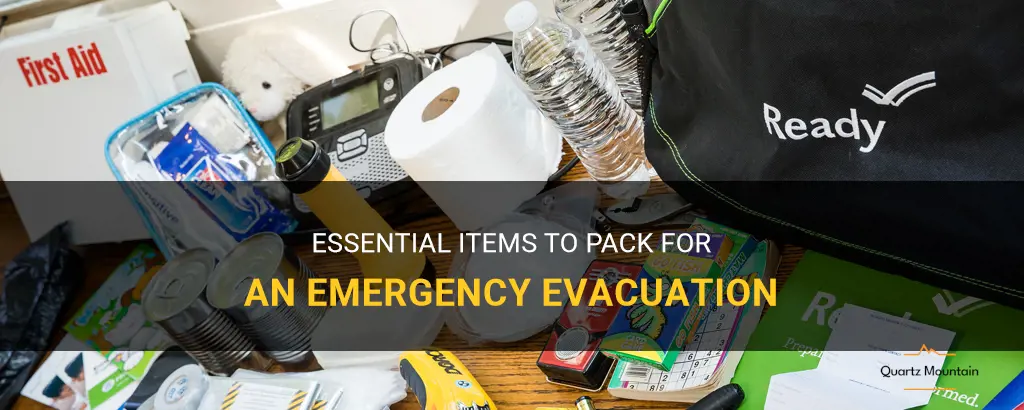
When disaster strikes and you are forced to evacuate your home, having the right essential items packed can make all the difference in ensuring your safety and survival. From first aid kits to important documents, emergency food and water supplies to communication devices, being prepared with the right items can help you navigate through uncertain times with confidence. In this article, we will take a closer look at some of the essential items you should include in your emergency evacuation pack, giving you peace of mind knowing that you are ready for any unforeseen circumstances that may come your way.
| Characteristics | Values |
|---|---|
| Food and Water | Non-perishable food, water (3-day supply) |
| Clothing | Change of clothes, sturdy shoes, hat |
| Medications | Prescription medications, first aid kit |
| Important Documents | Identification, insurance papers, passports |
| Money | Cash, credit cards |
| Communication | Cell phone, chargers, emergency contact list |
| Personal Hygiene | Toothbrush, toothpaste, soap |
| Sleeping Supplies | Blankets, sleeping bag |
| Tools and Supplies | Flashlight, batteries, multi-tool |
| Entertainment | Books, games, playing cards |
| Pet Supplies | Food, water, leash, crate (if applicable) |
| Important Personal Items | Family photos, sentimental objects |
| Baby Supplies | Diapers, formula, baby food |
| Personal Protective Equipment (PPE) | Masks, gloves |
What You'll Learn
- What essential items should I pack to evacuate during an emergency?
- How many days of clothing should I pack when needing to evacuate?
- What types of non-perishable food items are recommended for an evacuation kit?
- Are there any specific documents or personal identification items that should be included in an emergency evacuation bag?
- What type of emergency supplies should I consider packing for my pets if I need to evacuate with them?

What essential items should I pack to evacuate during an emergency?
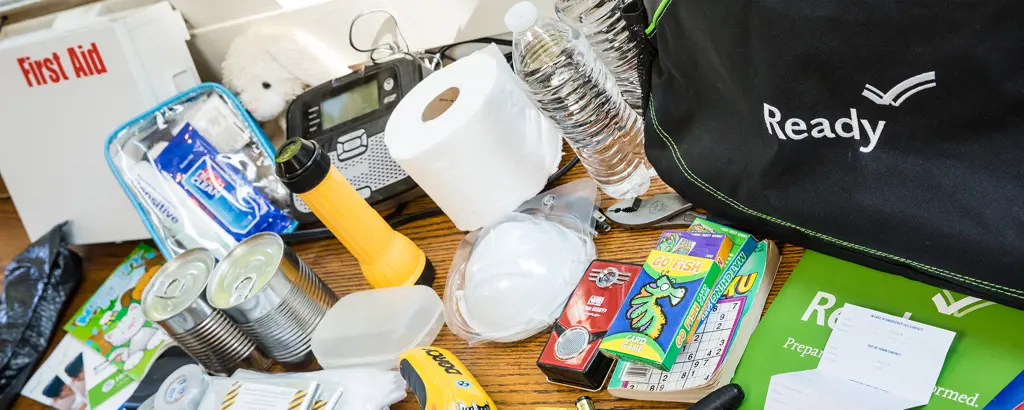
In times of emergency, it is crucial to have a well-prepared evacuation plan along with essential items that will ensure your survival and well-being. While you may have little time to gather your belongings, it is essential to prioritize the items that will be most beneficial in an emergency situation.
Here are the essential items that you should consider packing when evacuating during an emergency:
- Emergency Kit: Prepare a well-stocked emergency kit that includes items such as flashlights, batteries, a radio, non-perishable food, water, a first aid kit, a multipurpose tool, and a whistle. These items will prove invaluable during a crisis and can provide the necessary tools for survival.
- Important Documents: Gather all your crucial documents, including identification cards, passports, insurance policies, birth certificates, and any other legal documentation. Place them in a waterproof and fireproof container or a sealed plastic bag. These documents are essential for establishing your identity and accessing necessary services during and after an emergency.
- Clothing and Bedding: Pack a few sets of comfortable clothing, including socks, underwear, and outerwear suitable for the current weather conditions. Additionally, bring bedding items such as blankets, sleeping bags, or pillows. These items will provide warmth, comfort, and protection during your evacuation.
- Personal Hygiene Items: Include personal hygiene items such as soap, toothbrushes, toothpaste, hand sanitizer, menstrual products, and any other items you may require for daily hygiene. These items will help maintain personal cleanliness, preventing the spread of germs and reducing the risk of illness during an emergency.
- Prescription Medications: If you or anyone in your family requires prescription medications, make sure to pack an adequate supply along with necessary medical equipment, such as inhalers or insulin. Store medications in a cool, dry place to ensure their effectiveness. Remember to regularly rotate and replenish your supplies to avoid expired medications.
- Communication Devices: Pack a fully charged cell phone and charger, as well as extra batteries for a radio. In an emergency, communication with loved ones or emergency services is crucial. Having working devices will allow you to stay updated on the situation and inform others of your condition or location.
- Cash and Credit Cards: Keep some cash on hand, as ATMs and credit card machines may not be accessible during an emergency. In some cases, cash may also be necessary for purchasing supplies or obtaining transportation. Ensure that you have enough small bills, as retailers may have difficulty providing change.
- Valuables and Sentimental Items: While it may be challenging to carry all your valuables, it is advisable to pack important sentimental items such as photographs, keepsakes, or sentimental jewelry. These items hold emotional significance and can provide comfort during uncertain times.
- Emergency Contacts: Compile a list of important phone numbers, including family members, friends, neighbors, and emergency contact numbers. Having this information readily available will help you easily reach out to your loved ones in case of separation or emergency.
Remember, the key to preparing for an emergency evacuation is to plan ahead and pack your essential items well in advance. Secure them in an easily accessible location and continuously evaluate and update your supplies based on changing circumstances. By having these essential items at hand, you will increase your chances of survival and ensure the well-being of you and your loved ones during a crisis.
Essential Packing List for a Memorable 2-Week Caravan Trip
You may want to see also

How many days of clothing should I pack when needing to evacuate?
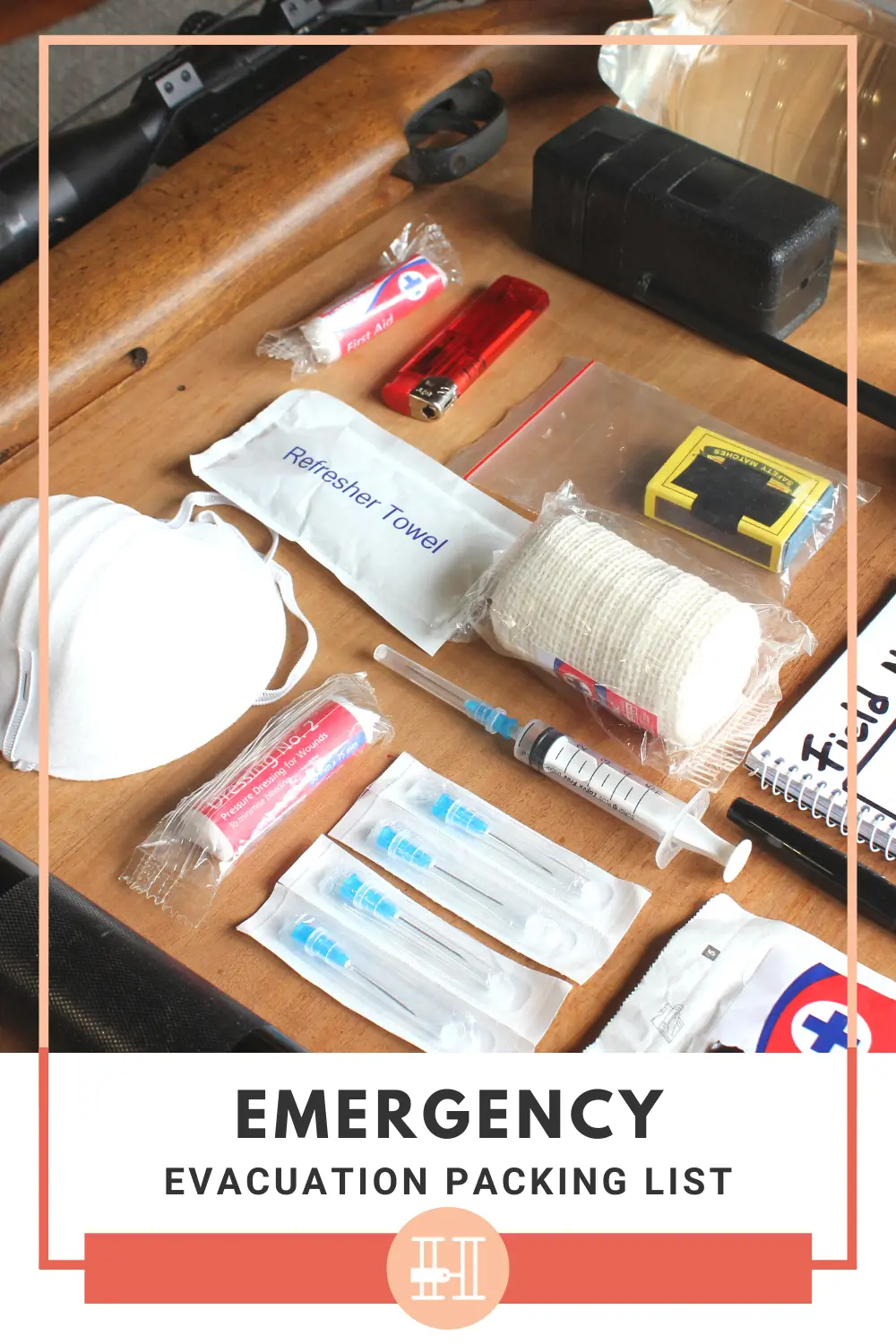
When faced with the need to evacuate your home, it is important to be prepared and pack essential items, including clothing. The number of days of clothing you should pack will depend on the situation and the duration of your evacuation. Here are some factors to consider when deciding how many days of clothing to pack.
- Length of evacuation: The first thing to consider is how long you expect to be away from home. If it is a short-term evacuation, such as for a few days, packing enough clothing for the duration of your stay should be sufficient. However, if you anticipate a longer evacuation, such as a week or more, you may need to pack additional clothing.
- Weather conditions: Take into account the weather conditions at your destination. If you are evacuating to a location with similar weather to your home, you may be able to pack clothes that you would normally wear. However, if the weather is different, you may need to pack appropriate clothing such as warmer clothes for cold weather or lighter clothes for hot weather.
- Type of activities: Consider the activities you are likely to engage in during your evacuation. If you plan on participating in outdoor activities or physical exercise, you may need to pack extra sets of activewear. On the other hand, if your evacuation is likely to be more sedentary, you may not need as many changes of clothing.
- Laundry facilities: Determine if there will be access to laundry facilities during your evacuation. If you will have access to laundry facilities, you may be able to pack fewer clothes and plan to do laundry while you are away. However, if there won't be any laundry facilities available, you will need to pack enough clothes to last the entire duration of your evacuation.
- Layering clothing: To maximize the usage of your clothing, consider packing items that can be layered. This way, you can adjust your clothing to accommodate different temperatures and weather conditions. For example, packing a mix of lightweight shirts and sweaters can provide versatility in managing different climate conditions.
- Packing essentials: Remember to pack basic essentials such as underwear, socks, and sleepwear. These items are often overlooked but are crucial for your comfort and hygiene during an evacuation. It is recommended to pack at least one set of these essentials for each day of your evacuation.
Example Packing List for a 7-Day Evacuation:
- 7 sets of clothing (including tops, bottoms, and outerwear)
- 7 sets of underwear and socks
- 7 sets of sleepwear
- 1 pair of comfortable shoes
- 1 set of activewear for physical activities
- 1 set of formal attire (in case of special events or gatherings)
- Basic toiletries and personal hygiene items
The above example packing list provides a general guideline for a 7-day evacuation. However, the specific number of clothing items you need to pack will depend on your personal preferences and circumstances. It is always wise to err on the side of caution and pack a few extra clothing items in case of unexpected situations or delays in returning home. Remember to also pack any necessary medications, important documents, and other essential items you may need during your evacuation.
Essential Items to Pack for a Hotel Stay
You may want to see also

What types of non-perishable food items are recommended for an evacuation kit?
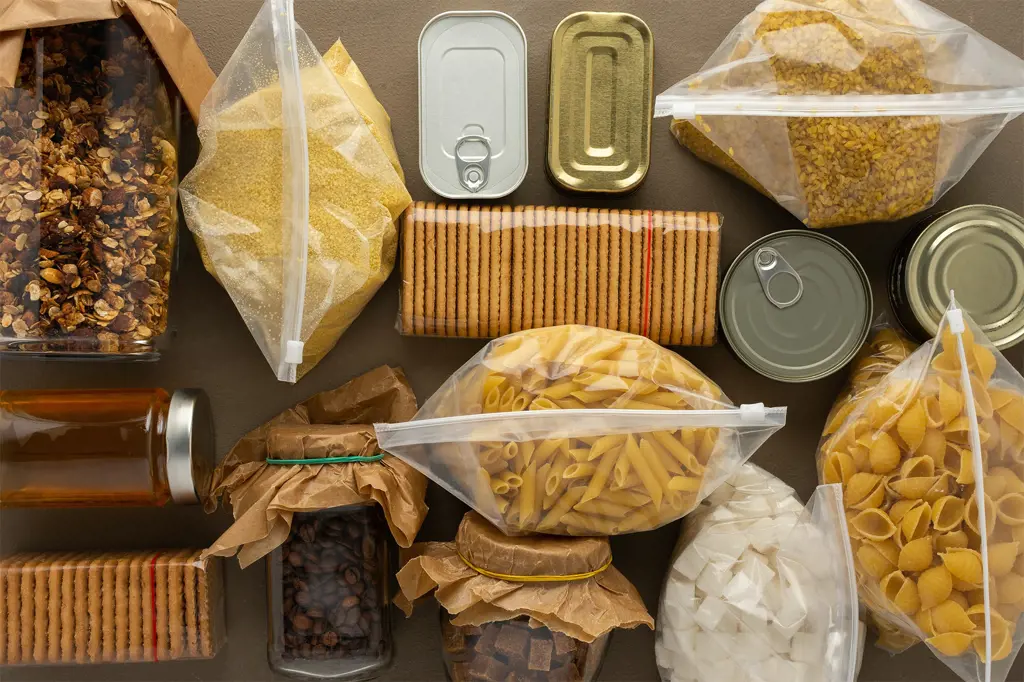
During times of emergencies such as natural disasters or evacuations, it is crucial to have an evacuation kit prepared with essential supplies including non-perishable food items. Non-perishable foods are those that have a longer shelf life, meaning they do not require refrigeration and can be safely stored for an extended period of time without spoiling. Here are some recommended non-perishable food items to include in your evacuation kit:
- Canned goods: Canned foods are an excellent choice for emergency preparedness as they have a long shelf life and can provide necessary nutrients. Choose canned fruits, vegetables, soups, and meats such as tuna or chicken. Make sure to include a manual can opener in your kit.
- Dried fruits and nuts: Dried fruits and nuts are great sources of essential vitamins, minerals, and healthy fats. They are light-weight and compact, making them ideal for storing in your evacuation kit.
- Granola bars and energy bars: These bars are convenient and provide a quick source of energy. Look for ones that are high in protein and low in sugar to keep you energized during stressful situations.
- Peanut butter: Peanut butter is a high-calorie and protein-rich food that can easily be stored for an extended period. It is versatile and can be eaten on its own or used as a spread for crackers or bread.
- Cereal and oatmeal: These dry items are easy to store and can be consumed with milk if available, or can be eaten as a snack. Choose whole-grain options for added nutrition.
- Jerky: Beef, turkey, or chicken jerky is a good source of protein and can be stored for a long time. It is lightweight and requires no cooking or refrigeration.
- Crackers and rice cakes: These items can be paired with peanut butter, canned meats, or cheese for a filling and nutritious snack. Choose whole-grain options for added fiber.
- Bottled water: Water is essential for survival. Store enough bottled water to last at least three days, with one gallon per person per day. Make sure to replace these periodically to ensure freshness.
It is important to regularly check the expiration dates of the non-perishable items in your evacuation kit and replace them as needed. Additionally, consider any dietary restrictions or allergies when selecting the food items for your kit. It is recommended to have at least a three-day supply of non-perishable foods for each person in your household. Remember, an evacuation kit should also include other essential items such as medications, first aid supplies, flashlight, batteries, and a radio.
Essential Items to Pack for Fire Evacuation in Australia
You may want to see also

Are there any specific documents or personal identification items that should be included in an emergency evacuation bag?
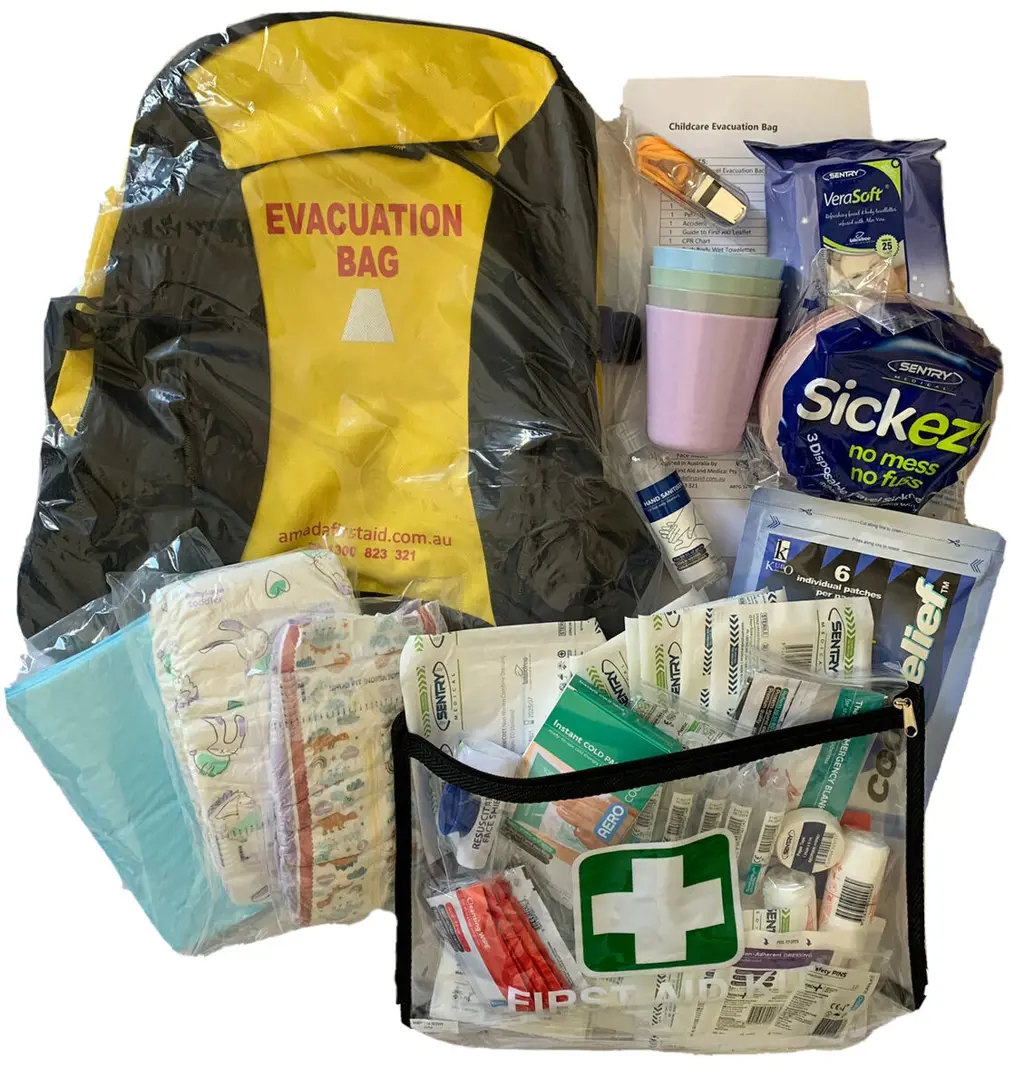
In the event of an emergency evacuation, it is crucial to have a well-prepared emergency evacuation bag that contains all the necessary items to ensure your safety and well-being. One important aspect of this bag is to include specific documents and personal identification items. These items will help to expedite any necessary processes during the evacuation and ensure that you have access to important information when needed.
Here are some specific documents and personal identification items that should be included in your emergency evacuation bag:
- Identification documents: Include copies of your driver's license, passport, birth certificate, and any other important identification documents. These documents will be necessary to prove your identity and provide important information should you need it during the evacuation.
- Insurance information: Include copies of your health insurance card, homeowner's or renter's insurance policy, and any other relevant insurance information. This will help you to quickly access any necessary coverage or assistance during the evacuation.
- Contact information: Include a list of emergency contact information for yourself and your loved ones. This should include phone numbers, email addresses, and any other relevant contact information. Having this information readily available will help you to stay connected with your loved ones and emergency services during the evacuation.
- Medical information: Include a list of any important medical information, such as allergies, medications, and pre-existing conditions. This will help medical personnel to provide appropriate care if needed during the evacuation.
- Cash and credit cards: Include some cash and a few credit cards in your emergency evacuation bag. This will ensure that you have access to money for any necessary expenses or emergencies that may arise during the evacuation.
- Important documents: Include copies of important documents such as your will, power of attorney, and any other legal documents that may be necessary during an emergency situation. These documents will help to ensure that your wishes are followed and that you have the necessary legal authority if needed.
- Emergency supplies: In addition to documents and personal identification items, it is important to include some emergency supplies in your evacuation bag. This may include a flashlight, extra batteries, a first aid kit, a portable phone charger, and non-perishable food items. These supplies will help to ensure your safety and comfort during the evacuation.
It is important to keep these documents and personal identification items in a waterproof and fireproof container within your evacuation bag. This will help to protect them from any damage that may occur during the emergency situation.
Remember to periodically review and update the documents and items in your emergency evacuation bag to ensure that they are current and reflect any changes in your personal information or circumstances.
In conclusion, including specific documents and personal identification items in your emergency evacuation bag is essential for a safe and efficient evacuation. By having these items readily available, you can ensure that you have access to important information and resources when needed. Take the time to gather these items ahead of time and keep them in a secure and easily accessible location within your evacuation bag.
Essential Packing list for a Trip to Kerala in October
You may want to see also

What type of emergency supplies should I consider packing for my pets if I need to evacuate with them?
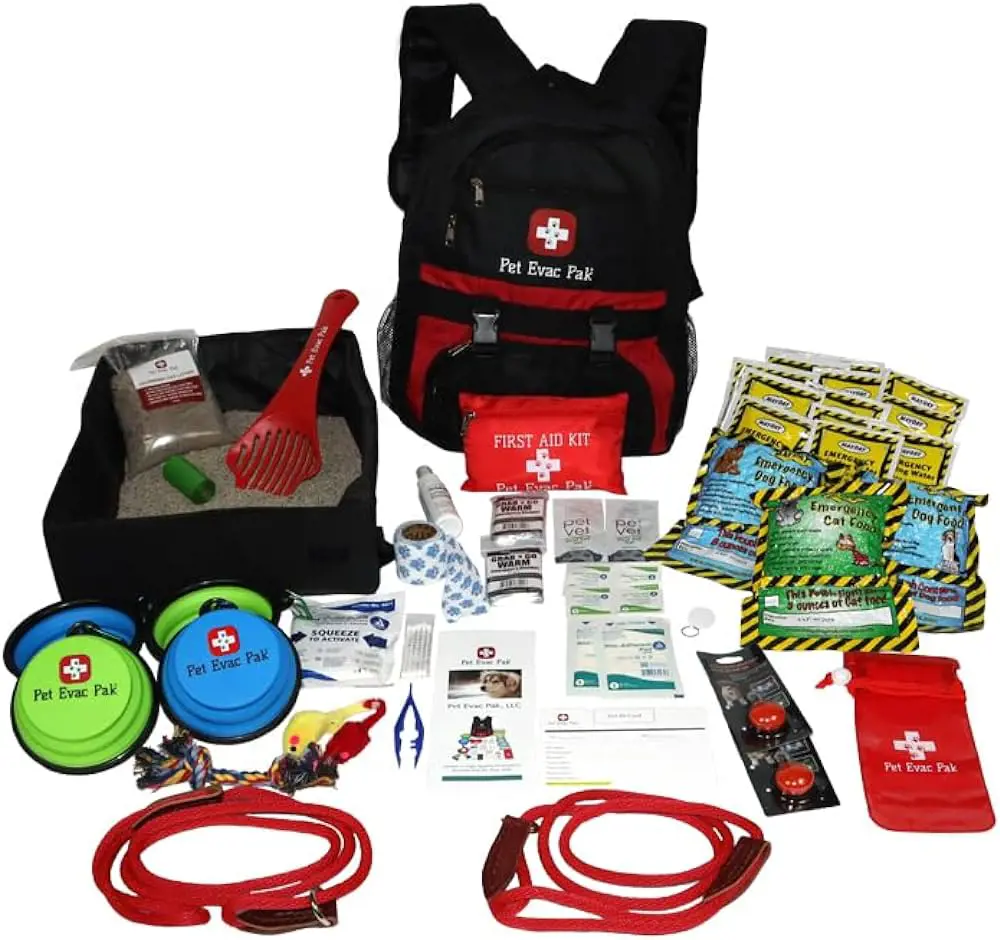
In the event of an emergency evacuation, it is important to have a plan in place for your pets as well. Just like you would prepare an emergency kit for yourself, it is crucial to include essential supplies for your furry friends. Here are some key items to consider packing for your pets:
- Food and Water: Make sure to have enough food and water to last your pets for at least three days. Pack canned or dry food that your pet is familiar with to minimize stress. Bring collapsible food and water bowls for easy storage and use.
- Medications: If your pet is on any medications, ensure that you have a sufficient supply packed in your emergency kit. It is also advisable to have a copy of their prescription in case you need to get more medication during the evacuation.
- Leashes and Collars: Have extra leashes and collars packed in case your primary ones get lost or damaged. It is essential to keep your pets leashed while in unfamiliar environments to prevent them from getting lost or injured.
- Carriers or Crates: Transporting your pets in a secure and comfortable manner is essential during an evacuation. Have appropriate carriers or crates that are well-ventilated and large enough for your pets to stand, turn around, and lie down in comfortably.
- Identification: Ensure that your pets have proper identification tags with their name, your contact information, and any important medical information. Also, consider having a microchip implanted in your pets as an added layer of identification.
- Blankets and Comfort Items: Pack familiar blankets or bedding to provide comfort to your pets during the stressful situation of evacuation. Familiar scents will help them feel more secure.
- Sanitation Supplies: Bring along poop bags, litter, and litter boxes for dogs and cats, respectively. It is crucial to maintain proper hygiene and clean up after your pets to prevent the spread of bacteria and diseases.
- Veterinary Records: Have copies of your pet's medical records, including vaccination history, in case they need medical attention during the evacuation. It is also a good idea to have a list of emergency veterinary hospitals in the area you are evacuating to.
- Pet First Aid Kit: In case of any injuries or emergencies, it is beneficial to have a pet first aid kit handy. Include items such as tweezers, bandages, antiseptic solution, and any specific medications or supplies recommended by your veterinarian.
- Comforting Items: If your pet has a favorite toy, bring it along to provide them with a sense of comfort and familiarity. These items can help alleviate stress and anxiety during the evacuation.
Remember to regularly check and update your pet's emergency supplies, ensuring that everything is still in good condition and not expired. Additionally, become familiar with evacuation plans and designated pet-friendly shelters in your area, so you know exactly where to go in case of an emergency. By being prepared, you can ensure the safety and well-being of your beloved pets during an evacuation.
Essential Items for a Ballerina's Competition Packing List
You may want to see also
Frequently asked questions
When preparing to evacuate, it's important to pack essential items that will help keep you safe and comfortable. Start by gathering important documents such as identification, passports, insurance policies, and any other necessary paperwork. Pack a few changes of clothes, including sturdy shoes and weather-appropriate attire. Don't forget personal hygiene items, medications, and any necessary medical equipment. It's also a good idea to pack non-perishable food items, a manual can opener, a first aid kit, flashlights, batteries, and a portable phone charger. Lastly, include any necessary items for your pets such as food, bowls, medication, and identification tags.
When packing clothing for an evacuation, it's best to pack enough for at least three to five days. This should include a mix of underwear, socks, pants, shorts, shirts, and outerwear suitable for the weather conditions you may encounter. Remember to pack comfortable and sturdy shoes, as you may be walking or standing for extended periods. It's always a good idea to check the weather forecast for your evacuation destination and pack accordingly. Additionally, consider packing a small laundry detergent and a clothesline if you anticipate being able to wash your clothing during your evacuation.
When preparing for an evacuation, it's crucial to gather and pack important documents that you may need. This includes identification documents such as driver's licenses, passports, and birth certificates. It's also wise to bring any insurance policies, medical records, and social security cards. Keep copies of these documents in a waterproof bag or folder, and consider storing digital copies on a portable storage device or in cloud storage for added security. If you have any relevant legal documents such as wills or power of attorney papers, be sure to include those as well.
When evacuating with pets, it's important to pack their essentials to ensure their safety and well-being. Start by packing enough food and water for your pet for at least three to five days. Bring along their food and water bowls, medications, and any necessary medical records or identification tags. It's also important to have a secure carrier or crate for your pet, as well as bedding, toys, and familiar items to help keep them calm during the evacuation. Don't forget to include extra waste bags, a leash or harness, and any necessary grooming or hygiene supplies.







